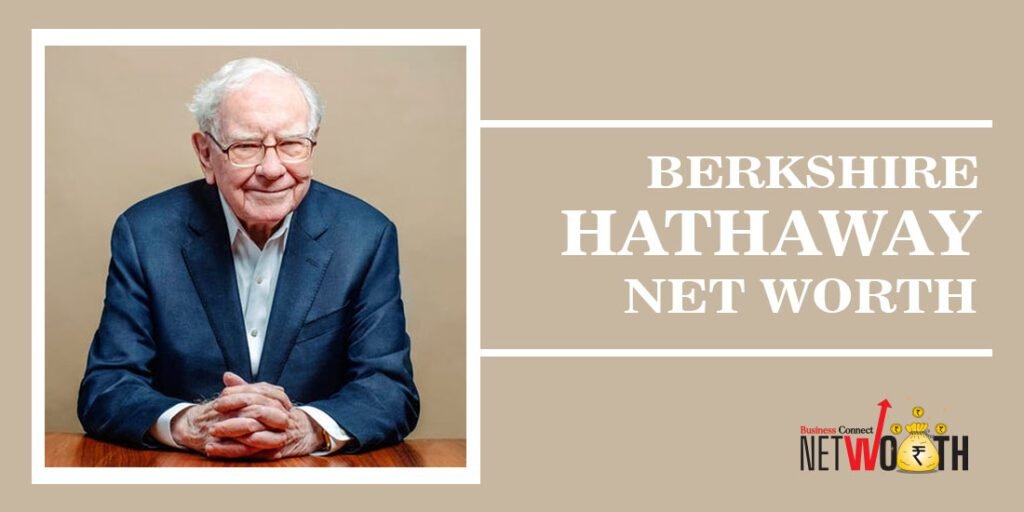Berkshire Hathaway Net Worth
Berkshire Hathaway Inc, headed by famous investment icon Warrant Buffet, is an American multinational conglomerate holding company. The company has its main office in Omaha, Nebraska, USA. The Forbes Global 2000 ranking and formula place Berkshire Hathaway as the eighth-largest public company in the world, the tenth-largest conglomerate by revenue, and the largest financial services company in the world.
Along with owning all of GEICO, Duracell, Dairy Queen, BNSF Railway, Lubrizol, Fruit of the Loom, Helzberg Diamonds, Long & Foster, Shaw Industries, Pampered Chef, Forest River, and NetJets, the company also holds a 38.6% stake in Pilot Flying J and significant minority stakes in the following public companies: Kraft Heinz Company (26.7%), American Express (18.8%), Bank of America (11.9%), The Coca-cola company (9.32%) and Apple (5.57%)
Berkshire Hathaway Net Worth:
The market capitalization of Berkshire Hathaway rose to over $730 billion on March 16, 2022, when its Class A shares closed above a record price of $500,000.
Warren Buffet’s Net Worth:
As per Forbes, Warren Edward Buffet, the CEO of Berkshire Hathaway projects a net worth of $ 99.4 billion as of September,2022making him the seventh-wealthiest person in the world. Buffett is also a business tycoon, philanthropist, and investor from the United States. He is one of the most successful investors too. Over 99% of his wealth will be given away, as promised. He has already donated over $48 billion, primarily to the Gates Foundation and the foundations of his children. He and Bill Gates started the Giving Pledge in 2010, whereby billionaires agreed to donate at least half of their wealth to charitable causes.
Initial History
Valley Falls on Rhode Island is the place where Oliver Chace founded the Company with the same name-Valley Fallsin 1839. Valley Falls delt in textile manufacturing. This is where Berkshire Hathaway’s history begins. Chace had previously been employed by Samuel Slater, who established the first prosperous textile mill in America. Chace established his first textile factory in 1806. The Adams, Massachusetts-based Berkshire Cotton Manufacturing Company and the Valley Falls Company merged in 1929.
This merger was named Berkshire Fine Spinning Associates. In 1955 Berkshire Fine Spinning Associates merged with Hathaway Manufacturing Company, which Horatio Hathaway had established in 1888 in New Bedford, Massachusetts. Following the merger, Berkshire Hathaway had 15 facilities with over 12,000 employees, a revenue of over $120 million, and its headquarters were in New Bedford.
However, seven of those locations had closed by the decade’s end, with significant layoffs taking place. In 1962, Warren Buffett started investing in Berkshire Hathaway stock after noticing a pattern in the price movement of the company’s stock whenever it closed a mill. Eventually, Buffett admitted that the company’s financial situation was not going to get better and that the textile industry was in decline. Seabury Stanton, the owner of the Hathway made an oral tender offer in 1964 to buy back Buffett’s stock in the company for $11 and a half per share.
Buffett accepted the offer. A few weeks later, Warren Buffett received the written tender offer, but it was for just $11 and 3/ 8. Later, Buffett acknowledged that the lower, undercutting offer had upset him. Buffett purchased more shares in order to take over the business and fired Stanton rather than selling at the slightly lower price. Buffett became the majority owner of a failing textile company as a result of this.
Initially, Buffett continued to run Berkshire’s core textile business, but by 1967, he had begun to diversify into other investments and the insurance sector. Berkshire’s acquisition of National Indemnity Company marked its entry into the insurance industry. The core of Berkshire’s insurance operations today (and a significant source of funding for Berkshire Hathaway’s other investments) is the Government Employees Insurance Company (GEICO), which Berkshire purchased an equity stake in the late 1970s. The final textile operations—the heart of Hathaway—were shut down in 1985.



